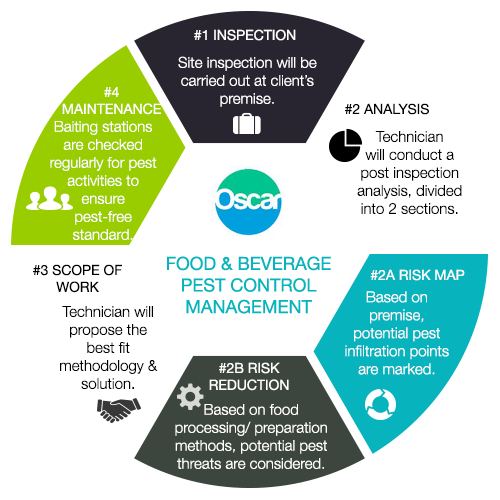Keep Parasites At Bay: Effective Approaches For A Rodent-Free Outdoor Location
Keep Parasites At Bay: Effective Approaches For A Rodent-Free Outdoor Location
Blog Article
Article Created By-Aagesen Hickman
Did you recognize that rats can squeeze with openings as tiny as a quarter? Visualize the effects for your outdoor area. From munching on plants to nesting in comfy edges, these pests can create chaos if offered the chance. But anxiety not, there are functional techniques you can use to maintain your yard rodent-free. By taking easy steps to seal entrance factors and maintain a clean atmosphere, you can create a fortress versus unwanted fuzzy visitors. So, are you ready to safeguard your outdoor place from these pesky intruders?
Identify Access Information
To effectively rodent-proof your exterior area, start by pinpointing prospective entrance points. Inspect your lawn for any type of spaces or openings that rats could utilize to gain access. Inspect areas such as spaces under doors, holes in the walls, or openings around utility infiltrations. Keep in mind that computer mice can squeeze via holes as small as a dollar, so be extensive in your exam.
Focus on locations where utilities enter your home, such as where pipelines, cords, or wires enter the structure. Seal any kind of gaps around these entrance points with materials like steel wool or caulk. Additionally, look for any cracks in the structure or spaces in the siding that might act as entry points for rats.
Pay very close attention to locations where plant life fulfills your home, as overgrown plants can supply hiding areas and simple access for rodents. Trim back professional flea treatment of overhanging branches or shrubs that could be used as bridges to your home. By identifying and sealing these access points, you can considerably lower the chances of rodents invading your outdoor room.
Implement Exemption Procedures
Inspecting and sealing entrance factors is the first step in rodent-proofing your exterior space; now you'll do something about it by carrying out exclusion actions.
Start by setting up door brushes up on all exterior doors to stop rats from squeezing with spaces. Seal fractures and crevices with weather-resistant sealer, concentrating on areas where energy pipelines enter your home.
Use cable mesh to cover vents and chimneys, ensuring they're safely attached. Trim tree branches and vegetation away from the house to eliminate potential bridges for rodents to access your roof.
In addition, take into consideration mounting steel flashing around the base of your home to prevent burrowing. Store firewood at the very least 18 inches off the ground and far from your house.
Keep garbage in securely sealed containers, and promptly tidy up any type of splashed birdseed or family pet food. By executing these exemption actions, you can dramatically minimize the possibility of rodents invading your exterior area.
Maintain Tidiness and Trimmed Landscape Design
Guarantee your exterior room stays clean and your landscaping is routinely trimmed to deter rats from locating harborage or food resources. Keeping your lawn tidy is crucial to lessening destinations for rats. Eliminate any kind of particles, mess, or unused products that could serve as concealing places for these parasites. visit my web site are attracted to areas with very easy access to food and sanctuary, so by keeping cleanliness, you make your residential property less attractive to them.
Routinely trimming your landscape design is likewise essential in rodent-proofing your outside space. Overgrown https://howtosafelyremovearatfrom40617.blog4youth.com/27092104/discover-the-undetected-burglars-besides-bed-pests-prowling-in-your-home-posing-a-risk-to-your-living-area-in-unusual-ways-maintain-on-your-own-enlightened-to-shield-your-safe-haven offers rats with ample hiding areas and potential nesting sites. By maintaining your yard cut, shrubs trimmed, and trees pruned, you remove possible environments for rats. In addition, cut landscape design makes it harder for rodents to access your home as they choose locations with adequate insurance coverage for defense.
Conclusion
Finally, by putting in the time to rodent-proof your outdoor room, you can guarantee a pest-free yard for many years ahead. Keep in ant mound removal to frequently check for access points, implement exclusion procedures, and maintain your backyard clean and properly maintained.
With these straightforward strategies in place, you can appreciate a serene and rodent-free outside environment. So, don't delay - start rodent-proofing today and bid farewell to undesirable critters in your backyard!
